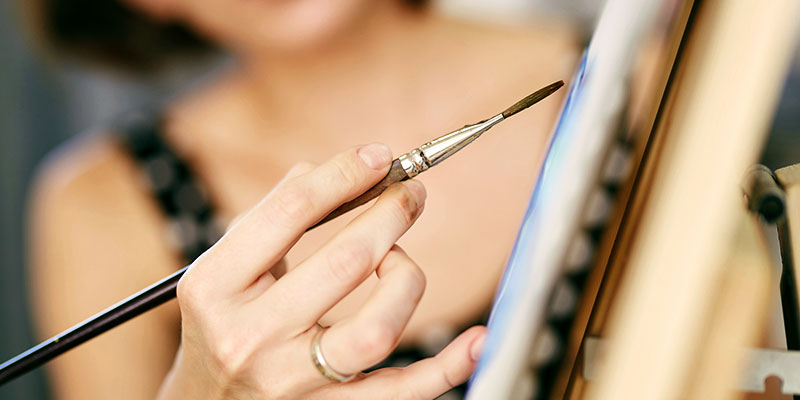5 Reasons Why Painting is Socially Important
A studio is an artist or worker's workroom. This can be for the purpose of acting, architecture, painting, pottery ceramics, sculpture, origami, woodworking, scrapbooking, photography, graphic design, filmmaking, animation, industrial design, radio or television production broadcasting or the making of music. The term is also used for the workroom of dancers, often specified to dance studio The French term for studio, atelier, in addition to designating an artist's studio is used to characterize the studio of a fashion designer. Atelier also has the connotation of being the home of an alchemist or wizard.
10 Facts From the Life of the Most Expensive Artist of Our Time
The studio of any artist, especially from the 15th to the 19th centuries, characterized all the assistants, thus the designation of paintings as "from the workshop of..." or "studio of..." An art studio is sometimes called an atelier, especially in earlier eras. In contemporary, English language use, "atelier" can also refer to the Atelier Method, a training method for artists that usually takes place in a professional artist's studio.

10 Facts From the Life of the Most Expensive Artist of Our Time
The above-mentioned "method" calls upon that zeal for study to play a significant role in the production which occurs in a studio space. A studio is more or less artful to the degree that the artist who occupies it is committed to the continuing education in his or her formal discipline. Academic curricula categorize studio classes in order to prepare students for the rigors of building sets of skills which require a continuity of practice in order to achieve growth and mastery of their artistic expression.
10 Steps: How to Create a Successful Business From Your Art
In educational studios, students learn to develop skills related to design, ranging from architecture to product design. In specific, educational studios are studio settings where large numbers of students learn to draft and design with instructional help at a college. Educational studios are colloquially referred to as "studio" by students, who are known for staying up late hours into the night doing projects and socializing.
Facility provided
Art Studio perfect minimal template to build beautiful and unique portfolio websites. It comes with nice and clean.
Art Studio perfect minimal template to build beautiful and unique portfolio websites. It comes with nice and clean.
Courbet painted The Painter's Studio in Ornans, France in 1855 "The world comes to be painted at my studio," said Courbet of the Realist work. The figures in the painting are allegorical representations of various influences on Courbet's artistic life. On the left are human figures from all levels of society. In the center, Courbet works on a landscape, while turned away from a nude model who is a symbol of Academic art.
The 1855 Paris World Fair's jury accepted eleven of Courbet's works for the Exposition Universelle, but The Painter's Studio was not among them. In an act of self promotion and defiance, Courbet, with the help of Alfred Bruyas, opened his own exhibition The Pavilion of Realism close.
Art
84%Trainer Art
91%Student Art
70%

The painting was produced during Courbet's involvement with Realism in art in the mid-19th century. Due to the short amount of time Courbet had to paint it, many original plans for the work had to be discarded. The most noticeable example of this is in the background of the painting. On the back wall of the studio in the painting, Courbet planned to paint replications of other works of his. He ran out of time to paint these in their entirety, so he then covered them up with a reddish-brown preparation color, leaving the partially-finished paintings still relatively.
The left side of the painting depicts people of everyday life in France The Jewish man and the Irishwoman were seen on a trip Courbet took to London in 1848, according to a letter Courbet wrote to Champfleury describing what the painting would look like There is also a "lay figure" "crucified figure" directly to the left of Courbet's easel. This figure appears contorted and potentially mangled. Art historians Benedict Nicolson and Georges Riat both interpret this figure as a symbol of the "death" of the art of the Royal Academy of Art in France.



